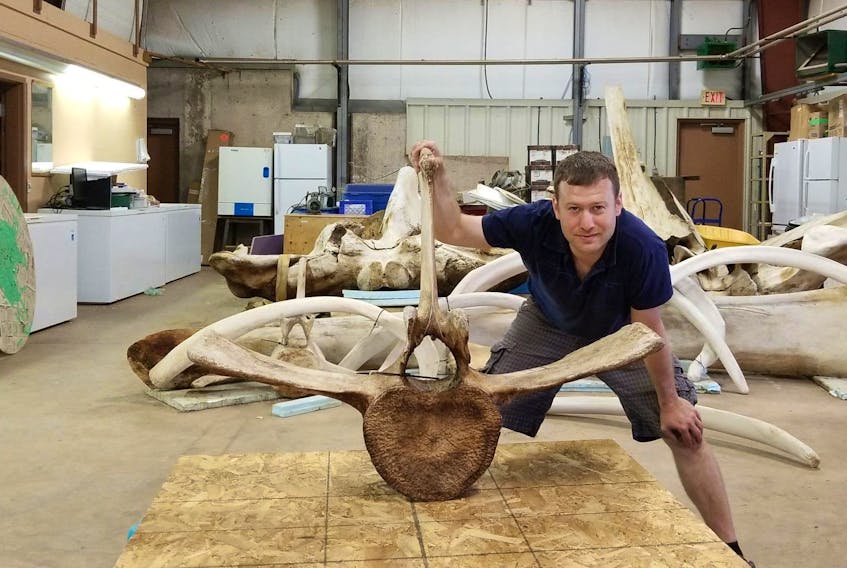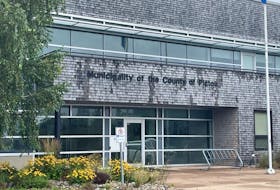A whale that washed up on a Queens County beach two years ago will be preserved for posterity in the digital world.
Researchers at Dalhousie University’s faculty of agriculture in Truro are scanning the roughly 200 bones of the blue whale skeleton and slowly assembling them into a 3D image that will be part of a virtual exhibition.
“It’s the first time I’ve dealt with a dead whale,” joked Chris Nelson, a senior instructor in the faculty’s engineering department, in an interview Thursday.
The blue whale carcass had been floating in the ocean for about two months before it washed up in East Berlin on May 2, 2017.
Researchers from the Maritimes and beyond descended on the beach to take advantage of the rare opportunity to learn more about the endangered animal.

One of the marine biologists involved in the work, Chris Harvey-Clarke of Dalhousie, recently contacted the agricultural engineers in Truro for the bone scanning and preservation work.
Besides the fact the former agricultural college has the equipment and space to deal with such a large-scale animal project, it was an opportunity to develop research connections between the main campus in Halifax and the relatively new agricultural faculty.
“He’s (Harvey-Clarke) really interested from the marine side of things. There was an opportunity and it was fantastic for me,” Nelson said.

First the bones were dried out to remove all of the natural oils present in a whale skeleton.
Then the research moved into the painstaking 3D scanning and image-assembling stage. A hand-held device is used to capture every detail of the light structure in the whale bones.
“(It’s) almost like painting with light,” Nelson explained.
“So anywhere the light hits we’re going to get 3D data. Anything in shadow we’re not going to be able to pick up so we have to move this scanner around to try and paint that whole shape with light. The software is able to stitch all that (light data) back together again, that’s the first part.”
Next, the data is organized into different categories of bone units and digitally reassembled with computer-assisted design software.
The Dalhousie exhibit, which is expected to be unveiled in 2021, will be one of only a few 3D representations of a blue whale skeleton in the world. There’s one on the website of the Natural History Museum in London, England.
“Part of what we’re going do is to make linkages with some of these other organizations,” Nelson said, in an effort to create a fuller picture of the blue whale and the marine world in general.
Eventually it’s hoped the actual skeleton will be displayed in the large atrium at the Steele Ocean Sciences Building at Dalhousie. Nelson and his team are working on another whale skeleton, that of a North Atlantic right whale, and it may be displayed as well.
“(We’re) just trying to bring awareness of what’s going on in our oceans and it is a big part of our history.”
But in order for the work to continue, the project will need a financial boost from donors. Nelson estimates the total cost will be in the $1 million range. To that end, a fundrraising campaign has been established at https://projectdal.ca/project/bluewhale/ with a goal of $335,000.
"We're limping by and doing the best we can with what we got," Nelson said, but the university can only bear so much of the financial burden.

RELATED:









